Creamy Pesto Chicken Pasta (One Pot!)
Recipe Overview
Why you’ll love it: Dinner doesn’t get much easier than this one pot creamy pesto chicken pasta recipe! With juicy chicken breast, tender pasta, and an herbaceous pesto cream sauce, you’ll feel like you’re eating dinner at a restaurant.
How long it takes: 45 minutes
Equipment you’ll need: large skillet
Servings: 4

Pin this now to find it later
Pesto is that one little trick that can immediately elevate the flavor of a dish. It packs a big punch in a relatively small package, making everything from grilled pizza to cheese and pesto stuffed zucchini, and this creamy pesto chicken pasta that much tastier.
My version of creamy pesto chicken pasta is a one pot recipe, which means you cook the dried pasta noodles right in the sauce. Like my other one pan pastas—Mexican spaghetti and creamy chicken pasta are two favorites—this recipe is fantastic for weeknights because not only is it easy to make, it’s easy to clean up afterwards!
One Pot Pesto Chicken Pasta
A little bit indulgent. Between the cream, the Parmesan, and the pesto, this recipe tastes like something you’d order at a restaurant with a glass of white wine. (And don’t forget the crusty bread and olive oil dipping sauce to sop up the sauce!)
Easy to customize. You can use this recipe as a springboard to create your own version catered to your family’s tastes. As long as you keep the proportions of liquid to pasta the same, it’s hard to go wrong!
Quick and easy. The one pan cooking method means this creamy pesto chicken pasta is a breeze to make, but it has high-end flavor that’s sure to impress.
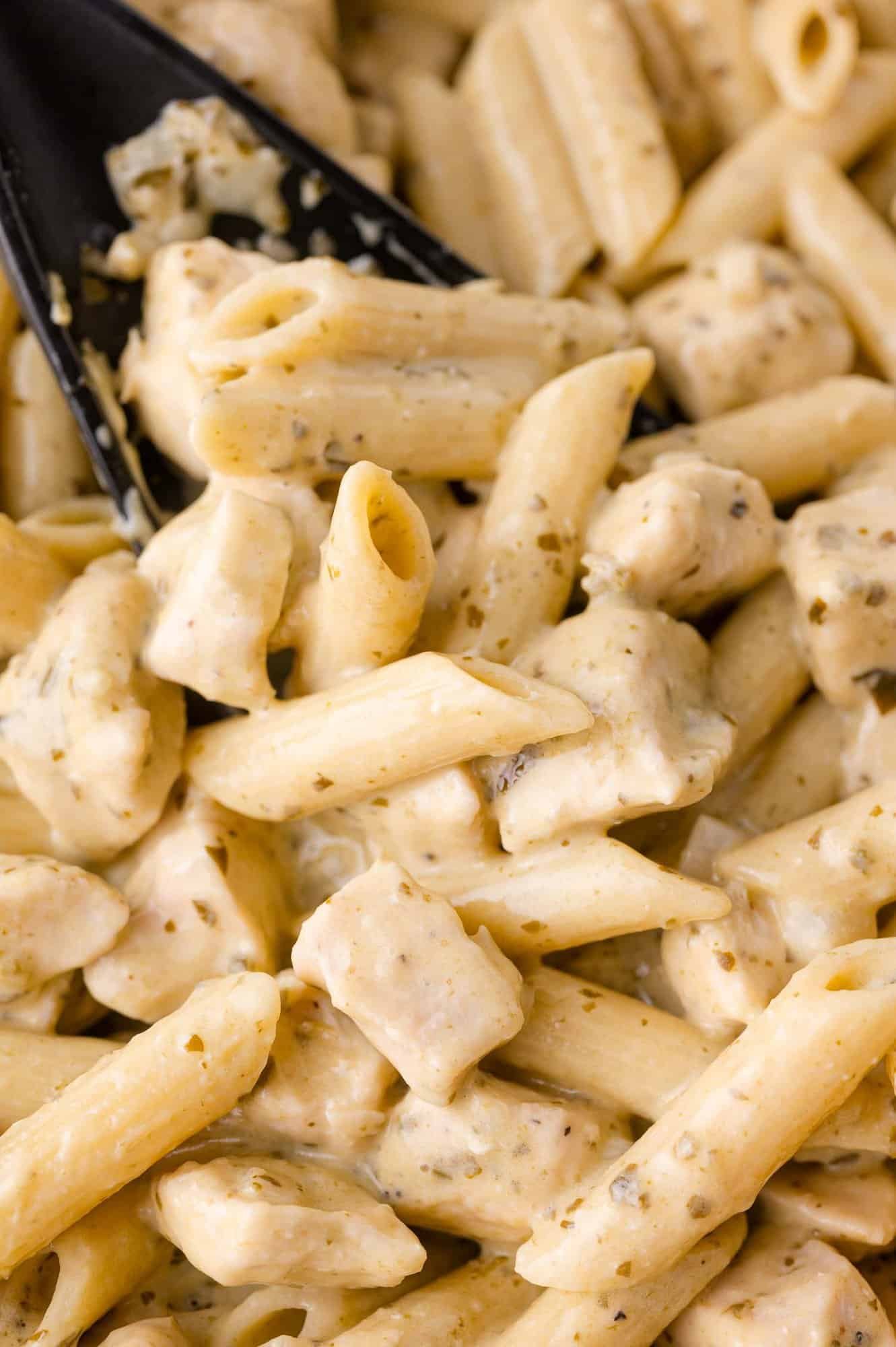
Ingredient Notes
- Chicken breasts: Boneless, skinless chicken breasts make prep easy. Cut them into uniformly-sized cubes.
- Olive oil: I use olive oil for cooking the chicken and sautéing the aromatics. Other types of oil can be substituted if you prefer.
- Diced onion and garlic: These two aromatics create a base of flavor for the sauce.
- Low-sodium chicken broth: Instead of cooking pasta in plain water, broth infuses flavor into the pasta as it cooks. and it also forms the base of the sauce. Use homemade if you have it on hand!
- Pasta: Either penne or rotini work well and hold the sauce beautifully. Other types of pasta can be used but you may have to adjust the cooking time a bit.
- Heavy cream: A little trick is to let the cream come to room temperature. Warm cream blends better into the sauce and won’t cool everything down when you add it in.
- Pesto: I often use my basil pesto recipe but store-bought pesto works perfectly fine. A jar of pesto is convenient to have in your pantry. You can also use it for flavoring soups, like this chicken tortellini soup, one of our favorite soup recipes.
- Grated Parmesan cheese: Freshly grated cheese is best, as it will melt into the sauce more smoothly (but I often use the shelf-stable grated Parmesan and it’s perfectly fine!).
- Fresh basil: An optional garnish, but it really does add a nice boost to the basil flavor in this pasta dish.
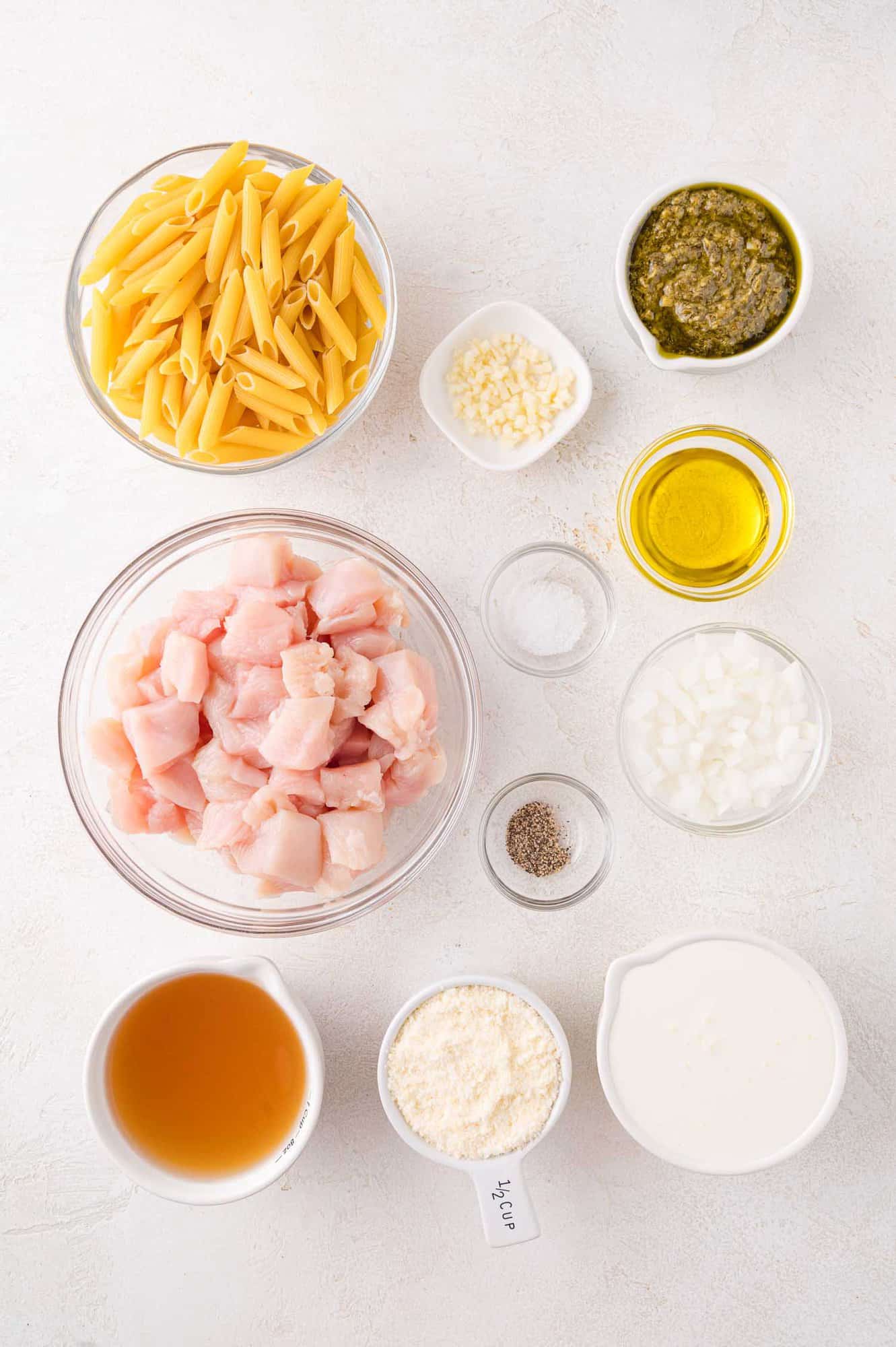
How to Make Creamy pesto Chicken Pasta
Cook the chicken. Warm the oil in a large skillet set over medium-high heat. Once it’s shimmering, add the chicken and season it with salt and pepper. Cook the chicken pieces until they are lightly browned on all sides; this should take 6 to 7 minutes. The chicken should be fully cooked with no pink remaining. Transfer the chicken to a clean plate.
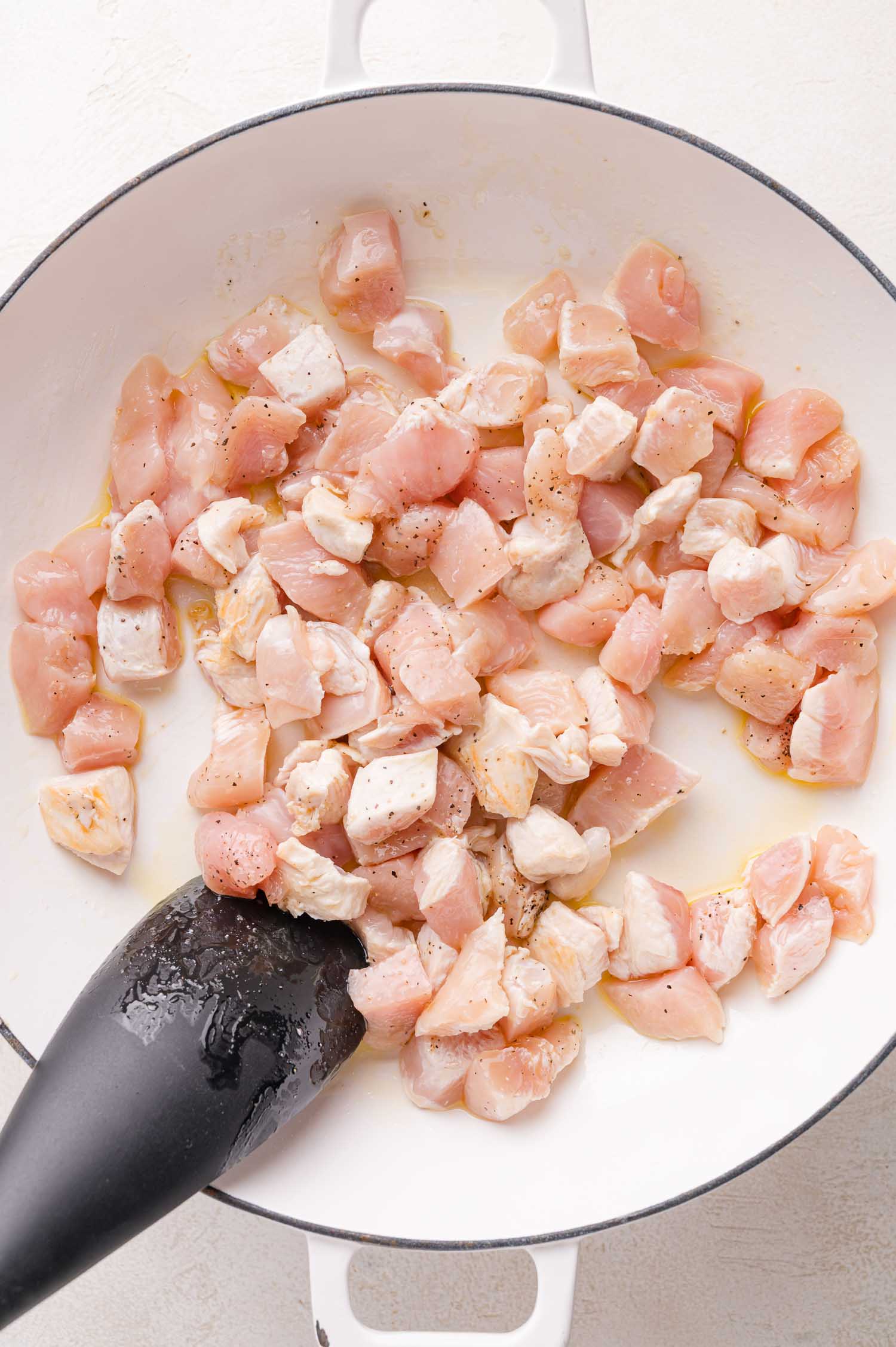

Cook the aromatics. Discard any juices from the pan; reduce the heat to medium and add a tablespoon of oil to the pan. Cook the onion until it softens, then stir in the garlic and cook, stirring constantly, until it’s fragrant, about another minute.
Simmer. Pour in the broth and add the pasta. Increase the heat to high, and then once the broth comes to a boil, reduce to a simmer. Cover and cook for 12 to 15 minutes, stirring occasionally, until the pasta is al dente. It’s important to stir it to make sure the pasta cooks evenly and doesn’t stick to the bottom of the pan.
Recipe Tip
If the liquid is completely absorbed before the pasta is tender, simply add a little bit more.
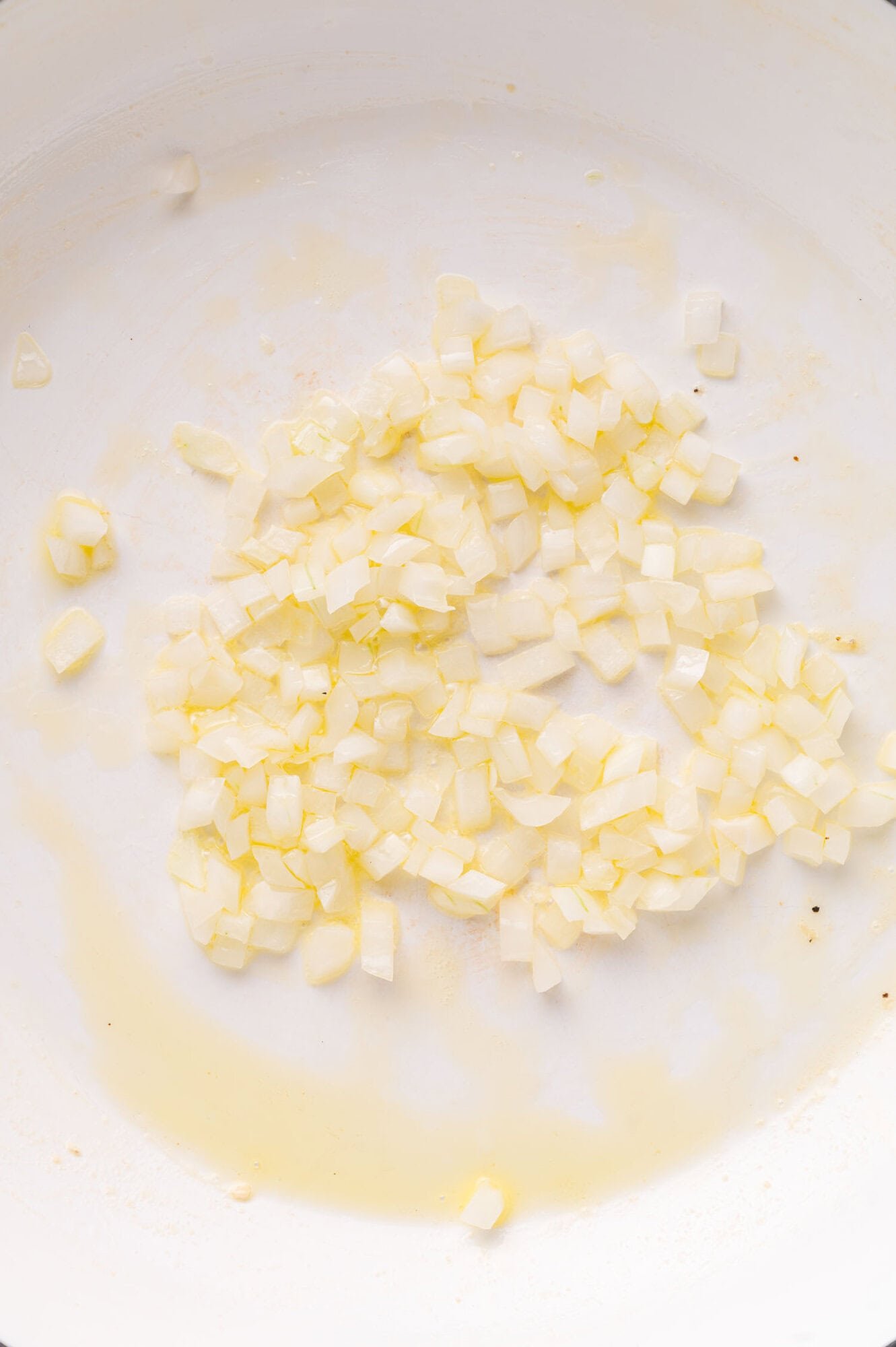
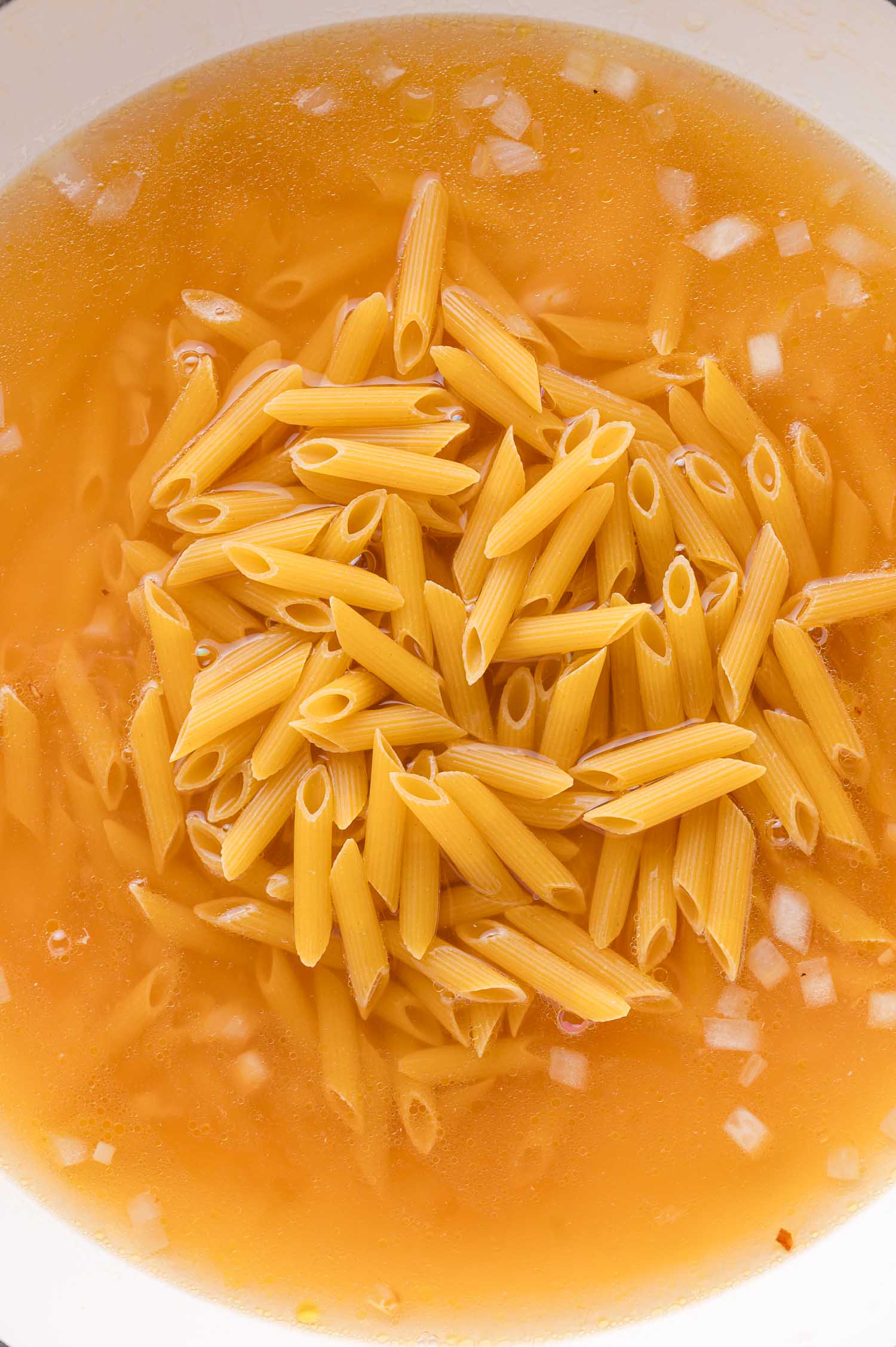
Add the remaining sauce ingredients. Stir in the cream, pesto, and Parmesan cheese, along with the chicken. Simmer over low heat to allow the sauce to thicken a bit. Don’t boil the sauce; keep it to a low simmer.
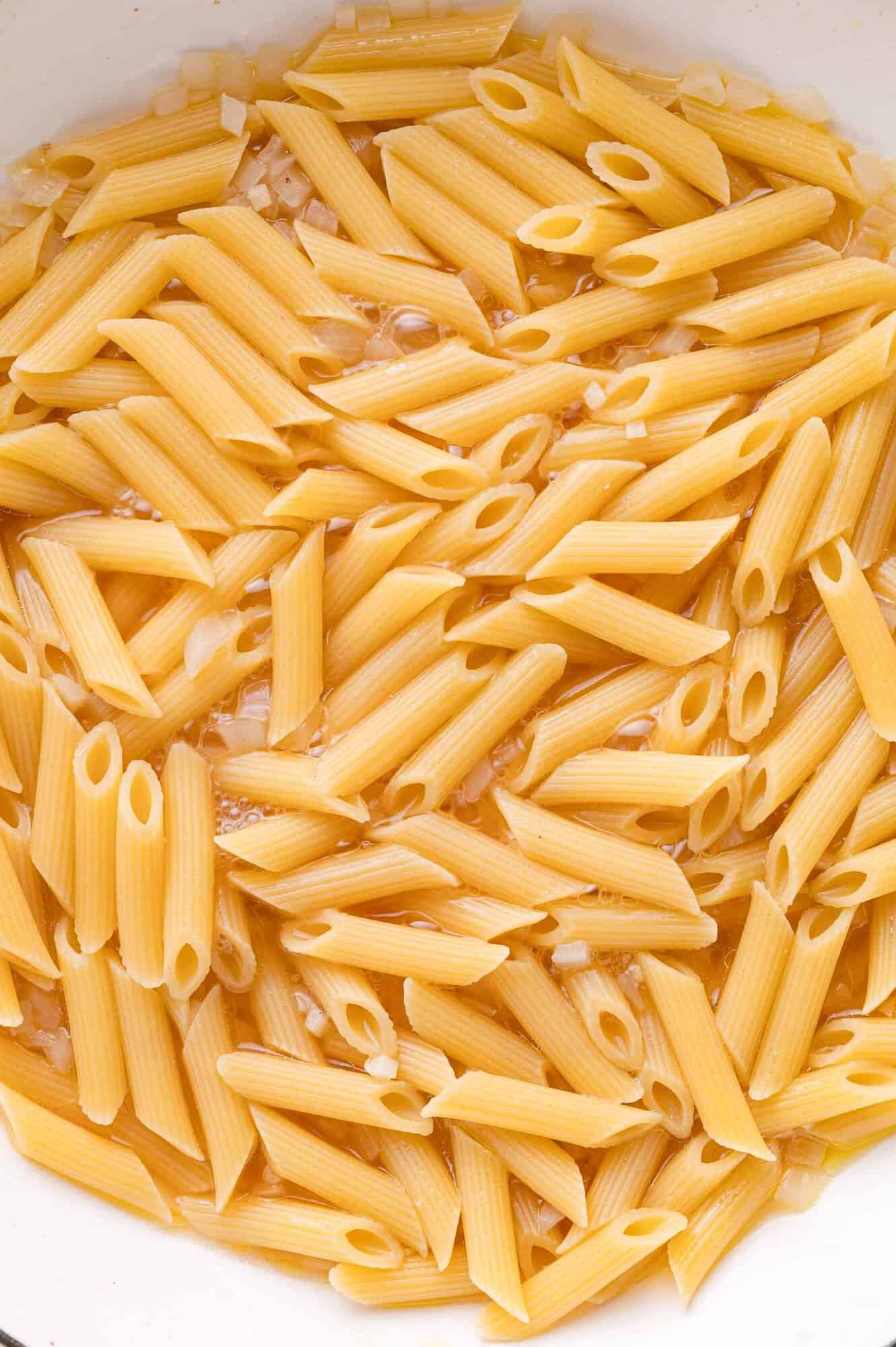
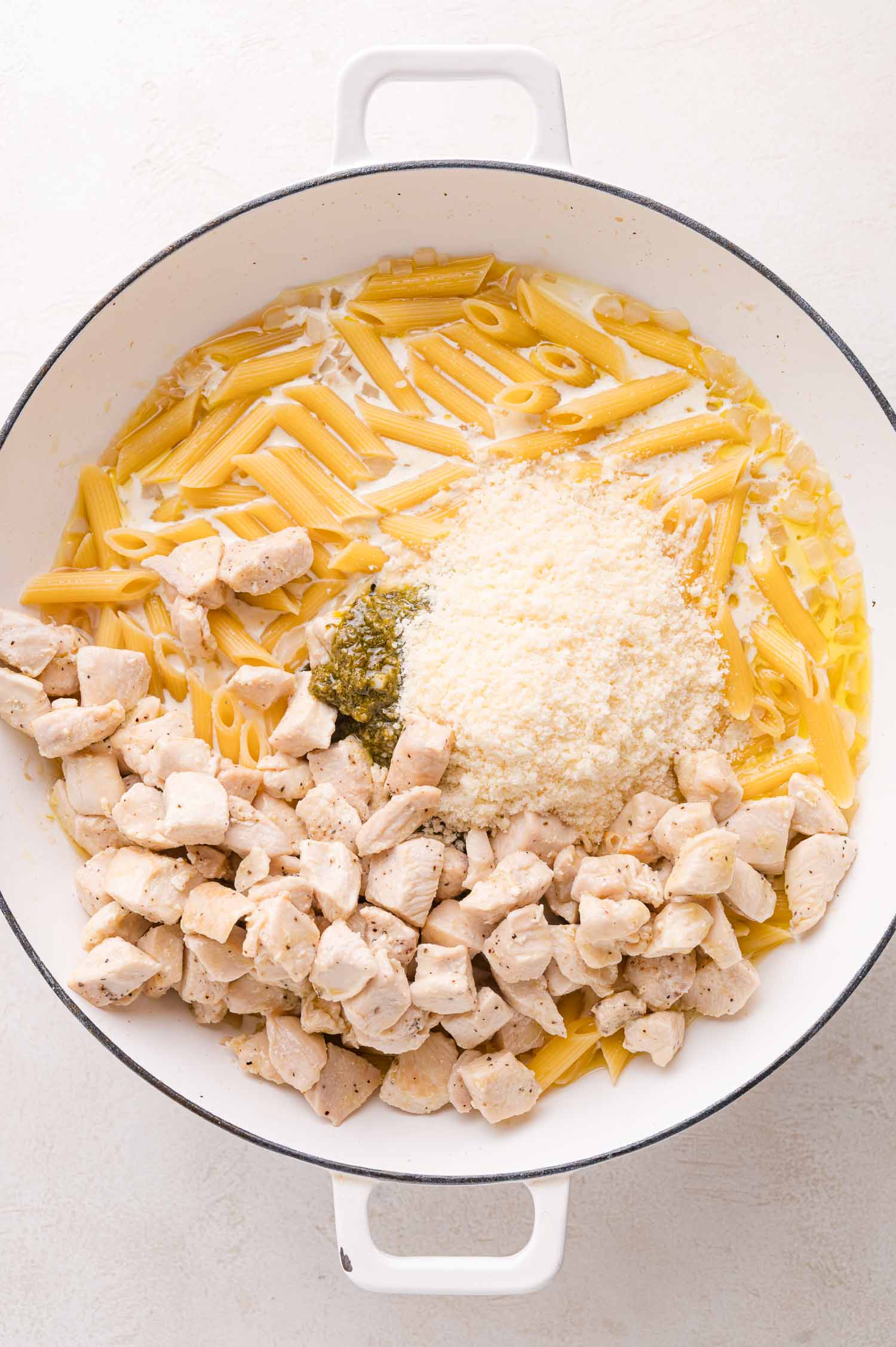
Finish. Remove the pan from the burner, cover it, and let the pasta cool for 5 minutes. It will continue to absorb the sauce and thicken up a bit. Season to taste and garnish with additional Parmesan and basil before serving.
Easy Recipe Variations
- Veg it up. Add your favorite veggies to amp up the nutrition and flavor. Add thawed frozen peas or baby spinach at the end of the cooking time, sauté mushrooms with the onion, or steam broccoli and stir that in just before serving.
- Swap in chicken thighs. If you prefer chicken thighs to chicken breasts, you can use those instead. I recommend boneless skinless chicken thighs.
- Use leftover chicken. Leftover spatchcock chicken or even rotisserie chicken would also work in this recipe. You can skip the first step of cooking the chicken, and simply stir in the cooked chicken with the cream, pesto, and cheese.
- Try another pesto variety. Arugula pesto and cilantro pesto both are good variations.
Serving Suggestions
Refrigerate: If you have any leftover creamy pesto chicken pasta, store it in an airtight container in the refrigerator for up to 3 days. Because this recipe is made with heavy cream, it should not be frozen; cream-based sauces are prone to splitting after freezing. If you’d like to try a creamy sauce that you can freeze, try my cauliflower alfredo sauce. It’s really quite amazing!
Reheat: You can warm up the pasta in a pan on the stovetop over medium low heat, adding a splash of cream or broth to loosen up the sauce if needed. The microwave also works as long as you’re careful not to overheat it. The key is to keep the heat low no matter which method you choose.
More One-Pan Pasta Recipes
Before you start, measure out the cream and leave it out of the fridge so it can come to room temperature.
Heat 2 tablespoons olive oil in a large skillet (with lid available) over medium-high heat. Add the chicken to the pan, season with salt and pepper, and cook for 6 to 7 minutes, stirring occasionally, until lightly browned on all sides and cooked through. Remove the chicken from the pan, transferring it to a clean plate, and set aside. Discard any accumulated juices.
3 tablespoons olive oil, divided, 1 ½ pounds boneless skinless chicken breasts, cut into bite-sized cubes, ½ teaspoon kosher salt, ¼ teaspoon coarse ground black pepper
In the same pan over medium heat, heat 1 tablespoon olive oil; add the chopped onion and sauté for 2 to 3 minutes until softened. Add the minced garlic and cook for an additional 1 minute, stirring constantly, or until fragrant.
½ cup diced onion, 3 cloves garlic, minced or pressed
Add the chicken broth and pasta. Bring to a boil over high heat, then reduce the heat to medium-low.
3 cups low sodium chicken broth, more if needed, 8 oz. uncooked pasta
Cover the skillet and continue to cook for 12 to 15 minutes, stirring occasionally to prevent sticking, until the pasta is tender. Add more broth or water as needed, but the majority of the liquid should be absorbed by the time the pasta has finished cooking.
Once the pasta is al dente, stir in the cream, pesto, Parmesan cheese, and cooked chicken. Simmer over low heat until the sauce has thickened slightly (don’t boil).
1 cup heavy cream, ½ cup basil pesto, ½ cup grated Parmesan cheese
Remove from heat, cover, and let rest for 5 minutes. This step improves the consistency of the sauce.
Taste and adjust the seasoning, adding more salt and pepper, if needed. Garnish with additional Parmesan and fresh basil, if desired.
- Heavy cream: For best results, take the cream out of the refrigerator when you begin cooking the meal so it has a chance to warm up. Heavy cream may be labeled as heavy whipping cream.
- Reduced sodium: Use low sodium or no-salt-added chicken broth, or homemade broth. The nutrition information is calculated with low sodium chicken broth.
- Possible variations: At the end of the cooking time, add thawed frozen peas or baby spinach; heat until the peas are warm or the spinach wilts. If you prefer, substitute boneless skinless chicken thighs, or leftover cooked chicken (add at Step 5).
- Spice it up: If you want to add a little heat, try adding ¼ teaspoon red pepper flakes.
Serving: 2cups, Calories: 912kcal, Carbohydrates: 53g, Protein: 54g, Fat: 53g, Saturated Fat: 21g, Polyunsaturated Fat: 3g, Monounsaturated Fat: 16g, Trans Fat: 0.02g, Cholesterol: 189mg, Sodium: 1071mg, Potassium: 1029mg, Fiber: 3g, Sugar: 5g, Vitamin A: 1686IU, Vitamin C: 5mg, Calcium: 238mg, Iron: 2mg
Nutrition information is automatically calculated, so should only be used as an approximation.

